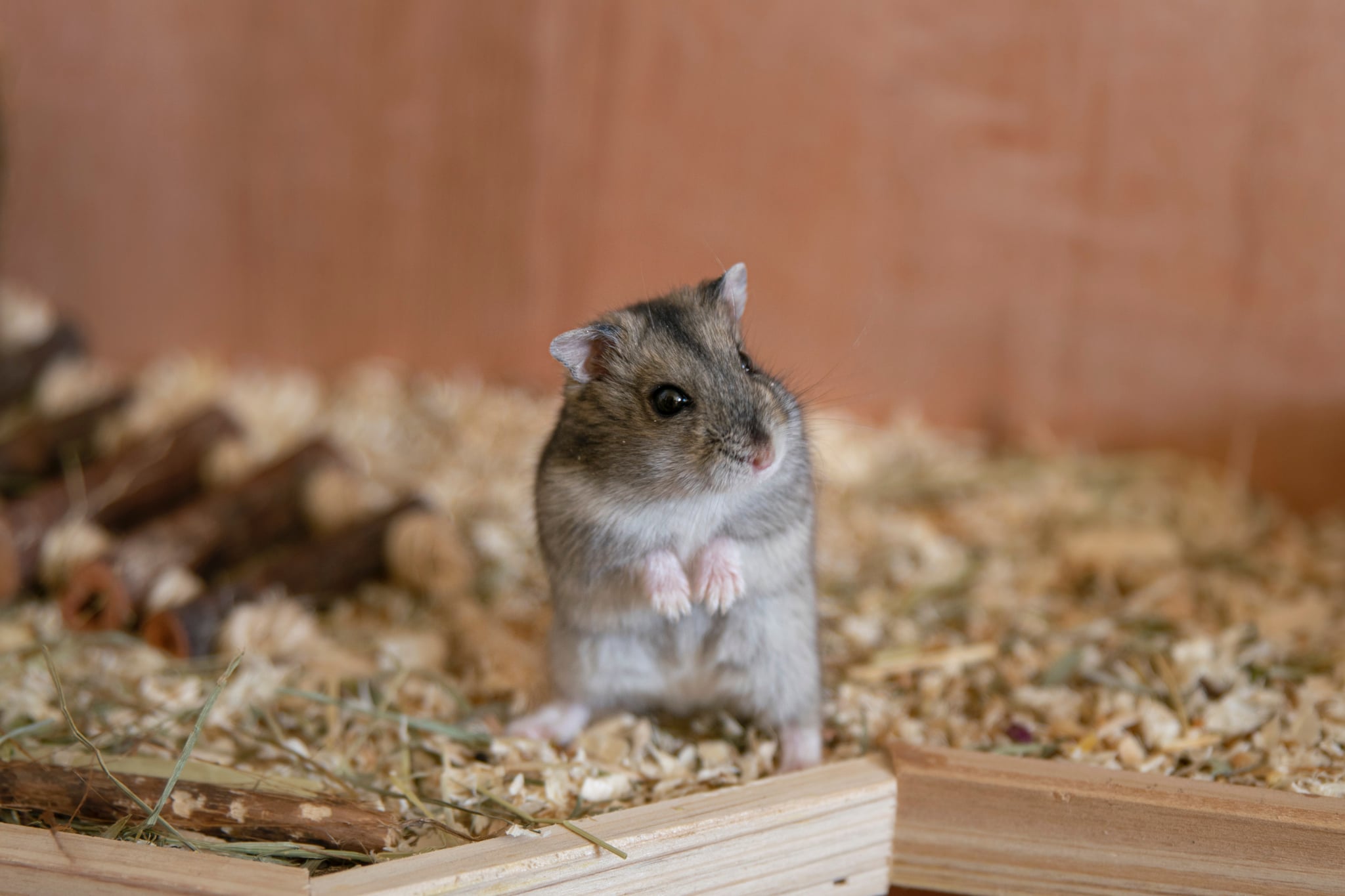Why Does My Hamster Have a Bald Spot?
What to Do When Your Hamster Has a Bald Spot

At first, you may not even notice that little patch of missing hair on your little hamster friend, but sometimes it can continue to grow until it's glaringly obvious. Alopecia, more commonly referred to as hair loss or balding, isn't an uncommon experience for many hamsters. Of course we care about our tiny sidekicks — my first hamster got me through final exams and provided a surprising amount of stress relief. So what can you do to make sure they're healthy and looking fly for their next Tiny Hamster BBQ? We asked vets to weigh in.
What might be causing my hamster's hair loss?
Unfortunately there's not one simple answer to this question. "Hair loss can occur for a number of reasons in hamsters," said Susan Brown, DVM, founder of the first all-exotic animal veterinary hospital in the country: the Midwest Bird & Exotic Animal Hospital located in Chicago, Illinois. "This loss of hair can be due to both disease and non-disease conditions." All that rubbing your hamster may do against the cage would be a potential non-disease cause of balding. The continual friction may wear away hair in a specific location.
Then again, the cause might be related to a specific disease. "Demodex mites are the most common external parasite causing problems in hamsters . . . the presence of these mites results in dry, scaly skin and subsequent hair loss," says Dr. Brown. Other potential causes noted by Dr. Brown include adrenal tumors, thyroid deficiency, interactions with cagemates, and chronic renal disease. Feeling a little overwhelmed by all of the potential culprits? The good news is, depending on the cause, there may be a solution to your hamster's hair loss.
What can I do about my hamster's hair loss?
Regardless of the specific cause of your hamster's hair loss, your veterinarian will be your best ally in coming up with a strategy to tackle the problem. Christoph Mans, DVM, a clinical associate professor of Zoological Medicine at the University of Wisconsin-Madison, said that in some cases deep skin scrapes are necessary for a diagnosis. Finding the cause can be important in case there's a serious health problem at play. But try not to fret — even infections like demodex mites are treatable, according to Dr. Brown. If your hamster is experiencing a mite infection, your veterinarian may recommend cleaning out your hamster's cage. Others solutions also include prescribing a number of antibiotics to resolve the situation.
Administering medications to your hamster may take a variety of forms, including orally, on the skin, or via injection. It's important to remember that treatment should extend beyond resolution of clinical signs, according to Dr. Mans, so be sure to finish the full treatment that your vet prescribes. Also be sure to provide the medication exactly as prescribed in order to prevent over or under dosing your hamster.
Your veterinarian might also help you to resolve behavioural causes of fur loss, like over-rubbing the cage. Sometimes rubbing may be associated with your hamster biting his cage. In this situation your veterinarian might recommend solutions that would deter the hamster from biting the cage, like distracting your hamster with new chewing toys.
Although it may be difficult to figure out what's behind that balding fur, there are treatments available for some of those causes. If you're concerned about your hamster, be sure to take your little furry friend into the veterinarian, and they'll help you find a solution.

